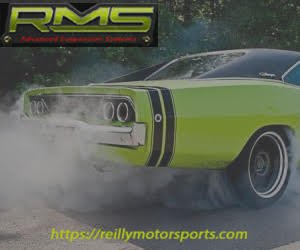
For as long as I can remember, my two dream Plymouth muscle cars have been a 1970–1974 ’Cuda and a 1970 Road Runner. In 2021, I finally scooped up my ’73 ’Cuda (“Sick Fish”), which has since evolved into my vision of a street/strip bruiser. That car has taught me countless lessons, both on the road and in the garage, as well as through multiple Power Tours and Drag-and-Drive events.

Above: The limited original Facebook Marketplace photos of our 1970 Plymouth Satellite project, offering only a glimpse of the car’s true potential.
For the past two years, I have hunted for the Road Runner to join my stable. In the end, I realized what I really needed was a Satellite, something in “okay” condition that I could transform into a dedicated Drag-and-Drive competition car. This time, I had the opportunity to apply everything I had learned from past builds from the ground up. No adapting after the fact, this would be a purpose-built machine.
Above Left: Loaded up and heading down the road, the Satellite begins its new chapter. We pulled it home behind our faithful 6-speed Cummins diesel. Above Center: Unloaded at last, the Satellite rolls onto familiar ground and officially claims its new home. Above Right: With a borrowed set of healthy 275/60R15s from Sick Fish, the Satellite wastes no time lighting up its first burnout and proudly announcing all 318 cubic inches of Mopar spirit.
My search ended close to home in Middle Tennessee. A rough Facebook Marketplace ad with four terrible pictures caught my eye: a 1970 Satellite with a running 318, a 904 transmission, and an 8¼ rear end. It needed floor pans, a trunk pan, rear frame rails, and plenty of patchwork elsewhere. The body was covered in four or five layers of paint and primer, topped with two decades of tree sap and other organic matter. In other words, it was perfect.

Above: A quick photo-op with our 2015 Hellcat, showcasing the upper grille profile and its design continuity when compared side by side.
One thing I have learned after five years of wrenching on classics: rust repair is rust repair. Whether it bubbles through a paint job or rots in plain sight, the work is the same. I would rather see the truth up front than discover it under someone else’s “restoration.”
For $4,000, it was a fair starting point. We trailered it home and celebrated with some one-wheel-peel burnouts in the driveway courtesy of the fierce little 318. Bent and sagging leaf springs be damned. Over the next few weeks, we ripped it around the block a few times, which kept the excitement alive while we finalized the vision for the build.
Above Left: Passenger-side floorboard with significant rust and advanced corrosion, including large holes where the metal has failed. Above Center: Driver-side floorboard showing moderate rust, with several weak spots and areas of thinning metal that will require attention. Above Right: Rear floor area displaying widespread surface rust, pitting, and early structural deterioration, highlighting the need for careful, thorough restoration.
Everyone has their preferences, and mine lean “old school.” I did not grow up with these cars when they were everywhere; you could say I was raised in the era of modern muscle from the 1990s and early 2000s. I have owned late-model Challengers, driven Corvettes, Mustangs, and Camaros, and there is no denying that today’s performance cars are mind-blowingly fast. But that is not what I am after.

Above: Trunk condition, showing extensive rust and structural decay throughout the compartment. Corrosion has eaten through multiple areas of the metal, and inspection reveals unibody damage at the rear frame rails, underscoring the significant restoration work required to return the car to solid, safe condition.
I want the raw, unrefined feel of a classic. A car that demands your attention, punishes your mistakes, and rewards you when you get it right; a machine you need to know by sound, feel, and instinct. You must watch the gauges. You must nail the shifts. No computers, no frills, just raw performance. Well, that and an excellent stereo for cross-country cruising.

Above: Green Go is born: our 1970 Plymouth Satellite is officially named, and the vision is locked. Every bolt, panel, and upgrade from here on out is aimed at turning this classic into a street-and-strip powerhouse.
It did not take long to nail down the basics: a rowdy big block, a manual transmission, torsion-bar suspension up front, a Dana 60 on Super Stock springs out back, and a big old bench seat inside. Induction would be carbureted. Ignition, dependable but straightforward. The manual transmission would need an overdrive to make those long-distance road trips bearable.
Above Left: A mountain of AMD replacement metal, each piece destined to bring Green Go back to solid, road-ready condition and restore the Mopar’s original integrity. Above Right: The US Car Tool Level 2 chassis stiffening kit, ready to reinforce the B-Body and ensure it stays rigid, handling every twist and turn without compromise.
The goal: a mid-10-second quarter-mile car out of the gate, with a chassis strong enough for 8.50s, should we decide to get serious later. Since the car was already being stripped to a bare shell, we decided to go all out, with extra chassis stiffening and a 10-point roll cage instead of the standard 6-point setup. It is better to do it right now than to have to do it again later.
Above Left: A sneak peek at our recovered bench seat, now dressed in PUI’s vibrant green décor, offering a bold preview of the interior’s finished look. Above Right: Our 505ci big block, TKX transmission, and Dana 60 rear end, all staged and ready, impatiently waiting to find their place under Green Go’s sheet metal and bring the car’s performance vision to life.
Mechanicals, wiring, and driveline are the easy parts for me. Picking colors, though, that is always tough. After sanding through the layers of primer and funk, I discovered the original F8 green beneath. I never thought I would want a green car, but it caught me off guard in the best way. A day later, my co-pilot Lily sat on the old bench seat, spotted the green “décor” interior, and pleaded, “Not another black interior like the ’Cuda!” She was right. It would be green-on-green.
Then Kevin Shaw from Mopar Connection Magazine upped the ante: why not a green Gator Grain vinyl top? Suddenly, the theme had locked into place.
Next came the hood. While digging through a Mopar graveyard in upstate New York, we stumbled upon a fiberglass Road Runner hood with a HEMI scoop grafted onto it. A hundred bucks later, it was ours, and when we placed it on the car, it looked perfect.
Above Left: The QA1 Level 1 Torsion Bar Drag Kit, set to keep Green Go firmly planted on every launch while ensuring it handles with precision, bridging the gap between street confidence and strip-ready performance. Above Right: After hours of relentless sanding and elbow grease, the original F8 green surfaces, breaking through decades of paint, primer, and grime, a raw glimpse of the car’s true heritage.
The name came just as organically. In the Drag-and-Drive community, my group of friends lives by the motto “tacos and burnouts.” Racing is serious, but if you are not having fun, what is the point? While I was explaining this to Kevin, he called me a “Gringo.” Then he glanced at the freshly exposed green paint. Just like that, Green Go was born.
With a plan in place, it was time to line up the right parts:
- Sheet Metal: All new panels from Auto Metal Direct (AMD), a fit and finish I have come to trust.
- Chassis Stiffening: Complete kit from US Car Tool, everything but mini tubs.
- Roll Cage: Built by longtime Drag-and-Drive racer and fabricator Jeff Oppenheim, tight, strong, and minimally intrusive.
- Engine: A stout 505ci stroker from Kevin Shaw’s Mopar Connection Magazine project, built on a 440 block, making 631 hp and 659 lb.-ft of torque. Perfect for our ET goals, with room to grow.
- Transmission: Silver Sport Tremec TKX PerfectFit kit with QuickTime SFI bellhousing, McLeod RXT clutch, and a traditional mechanical throw-out bearing.
- Suspension: QA1 K-member, shocks, and front suspension, proven parts I have already logged 15k miles with on my ’Cuda.
- Rear End: Dana 60 from Currie Enterprises, hung on Mancini Racing Super Stock springs.
- Interior: Green-on-green from Parts Unlimited Interiors (PUI), USA-made and dead-on for a ’70 Mopar.
- Trim & Misc: AMD for glass, bumpers, regulators, and trim, with YearOne and Classic Industries filling the gaps.
Above Left: Green Go gets some extra attention with additional sanding, revealing its sleek side profile and giving a first glimpse of the custom old fiberglass hood taking shape. Above Center: The HEMI scoop rising over the Road Runner-style hood bulge mirrors the lower grille’s lines, hinting at the aggressive stance and purposeful design to come. Above Right: A couple of battle-worn Mopars, Sick Fish and Green Go, sit side by side, soaking up a sunny day and reminding us why these cars are worth every hour of work.
Of course, there is still plenty left to decide: brakes, wiring, carburetor, ignition, gauges, and stereo are all on the list. But having a clear plan is half the battle. With the vision locked in, parts trickling in, and the chassis prepped, Green Go is ready to take shape.








































